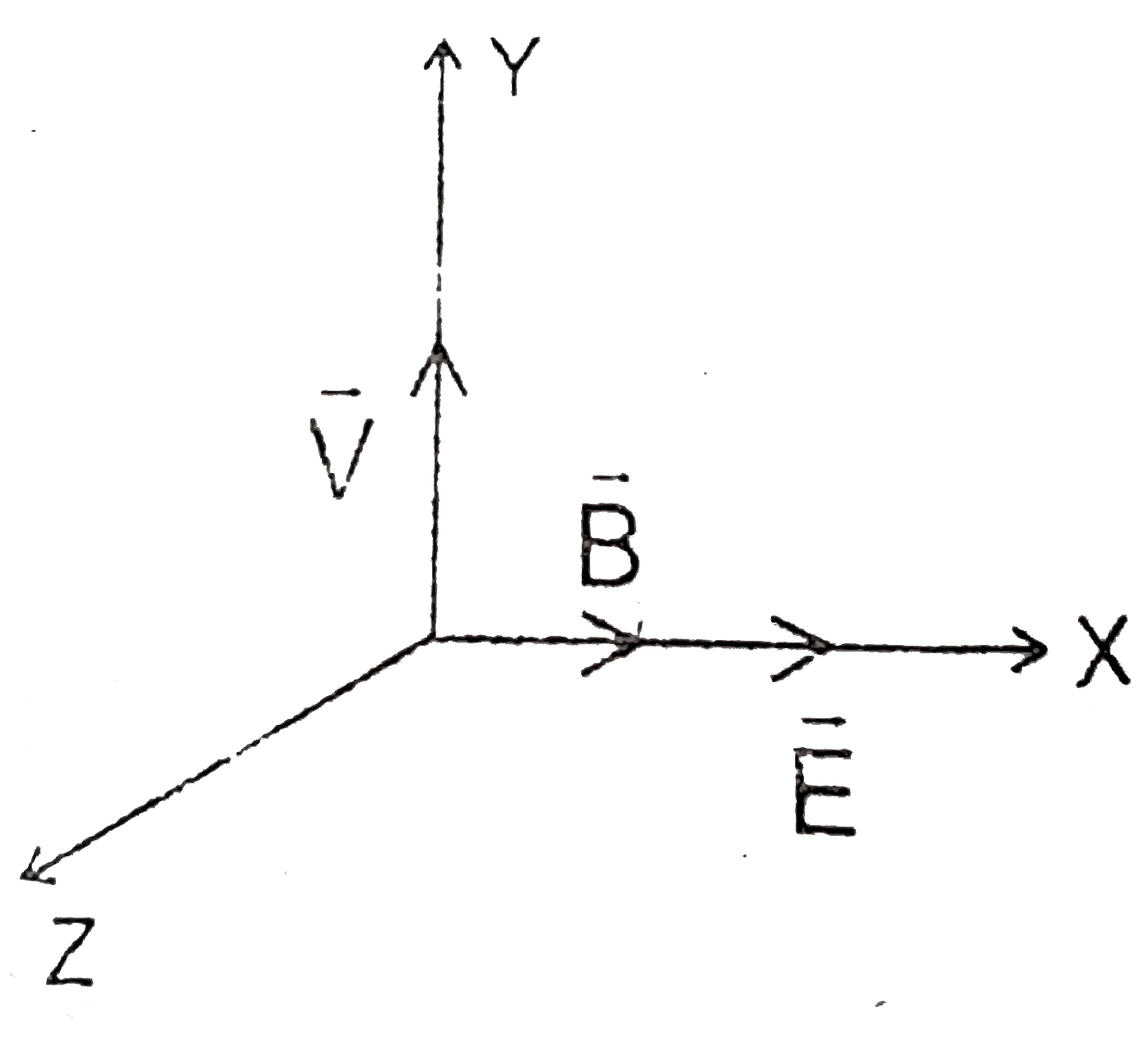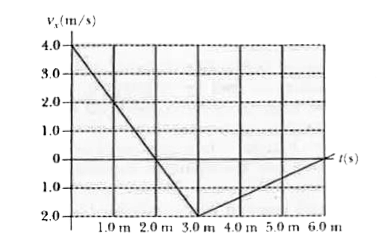A particle of charge =1μC and mass m=1 gm starts moving from origin at t = 0 under an electric field of 103N/C along x-axis and magnetic field of 10 tesla along the same axis with the velocity of →v=20ˆj m/sec as shown, the speed of the particle at the time of 20√3sec will be :

20 m/sec
40 m/sec
10 m/sec
None
The correct Answer is:B
As V2=V2xV2y=(qEmt)2+(20)2
=(10−610310−320√3)2+(20)2=1600
V=40m/sec
Topper's Solved these Questions
- BOOK - RESONANCECHAPTER - DAILY PRACTICE PROBLEMEXERCISE - DPP No.529videos
DAILY PRACTICE PROBLEM
- BOOK - RESONANCECHAPTER - DAILY PRACTICE PROBLEMEXERCISE - DPP No.5320videos
DAILY PRACTICE PROBLEM
- BOOK - RESONANCECHAPTER - DAILY PRACTICE PROBLEMEXERCISE - DPP No.509videos
DAILY PRACTICE PROBLEM
- BOOK - RESONANCECHAPTER - CURRENT ELECTRICITYEXERCISE - High Level Problems (HIP)21videos
CURRENT ELECTRICITY
- BOOK - RESONANCECHAPTER - ELECTRO MAGNETIC WAVESEXERCISE - Exercise 327videos
ELECTRO MAGNETIC WAVES
Similar Questions
A particle of charge q and mass m starts moving from the origin under the action of an electric field →E=E0ˆi and →B=B0ˆi with velocity →v=v0ˆj. The speed of the particle will become 2v0 after a time
View SolutionAn a particle is moving in a magnetic field of (3ˆi+2ˆj) tesla with a velocity of 5×105ˆi m/s. The magnetic force acting on the particle will be-
View Solution
Knowledge Check
- Question 1 - Select One
A particle of charge q=4μC and mass m = 10 mg starts moving from the origin under the action of an electric field →E=4ˆi and magnetic field →B=(0.2T)ˆk. Its velocity at (x, 3, 0) is (4→i+3→j). The value of x is -
A11516mB12516mC13516mD14516m - Question 2 - Select One
A particle of charge q and mass m starts moving from the origin under the action of an electric field →E=E0ˆiand→B=B0ˆi with a velocity →v=v0ˆj. The speed of the particle will become 2v0 after a time.
At=2mv0qEBt=2Bqmv0Ct=√3Bqmv0Dt=√2mv0qE - Question 3 - Select One
A particle of charge q0 and of mass m0 is projected along the y-axis at t=0 from origin with a velocity V0. If a uniform electric field E0 also exist along the x-axis, then the time at which debroglie wavelength of the particle becomes half of the initial value is:
Am0v0q0E0B2m0v0q0E0C√3m0v0q0E0D3m0v0q0E0
A particle of charge q and mass m starts moving from the origin with a velocity →v.eqv0ˆj under the action of an electric field →E=E5¯i and magnetic field →B=B0→i The speed of the particle will become 2v0 aftet a time t=√xmw0qE0. Find the value of x.
View SolutionA particle of charge q and mass m released from origin with velocity →v=v0ˆi into a region of uniform electric and magnetic fields parallel to y-axis. i.e., →E=E0ˆjand→B=B0ˆj. Find out the position of the particle as a functions of time
Strategy : Here →E∣∣→B
The electric field accelerates the particle in y-direction i.e., component of velocity goes on increasing with acceleration
ay=Fym=Fem=qE0m
The magnetic field rotates the particle in a circle in x-z plane (perpendicular to magnetic field) The resultant path of the particle is a helix with increasing pitch.
Velocity of the particle at time t would be
→v(t)=vxˆi+vyˆj+vzˆkView SolutionA particle with 10−11 coulomb of charge and 10−7kg mass is moving wilth a velocity of 108m/s along the y-axis. A uniform static magnetic field B=0.5 Tesla is acting along the x-direction. The force on the particle is
View SolutionThree particles start from the origin at the same time, one with a velocity v1 along the x-axis, second along the negative y-axis with a velocity v2 and third particle moves along the line x = y. The velocity of third particle, so that three may always lie on the same line is:
View Solutionvx is the velocity of a particle moving along the x-axis as shown in the figure. If x=2.0m at t=1.0s, what is the position of the particle at t=6.0s ?
 View Solution
View Solution

